Glass Sample Sets
Planning kilnformed glass projects requires a lot of imagination because glass changes when it is fired. It changes in texture, reflectivity, and color. A design that seemed like a good idea at the start, often does not come out pleasing at the end. One method I have found that helps me be able to visualize the appearance of the projects after firing, is the creation of a sample set. I use Bullseye glass, and they make very nice sample sets for kilnforming. These sets have a 2″ square of each color, and show the appearance of striking glass after firing. As Bullseye adds new colors, sample set updates are available.
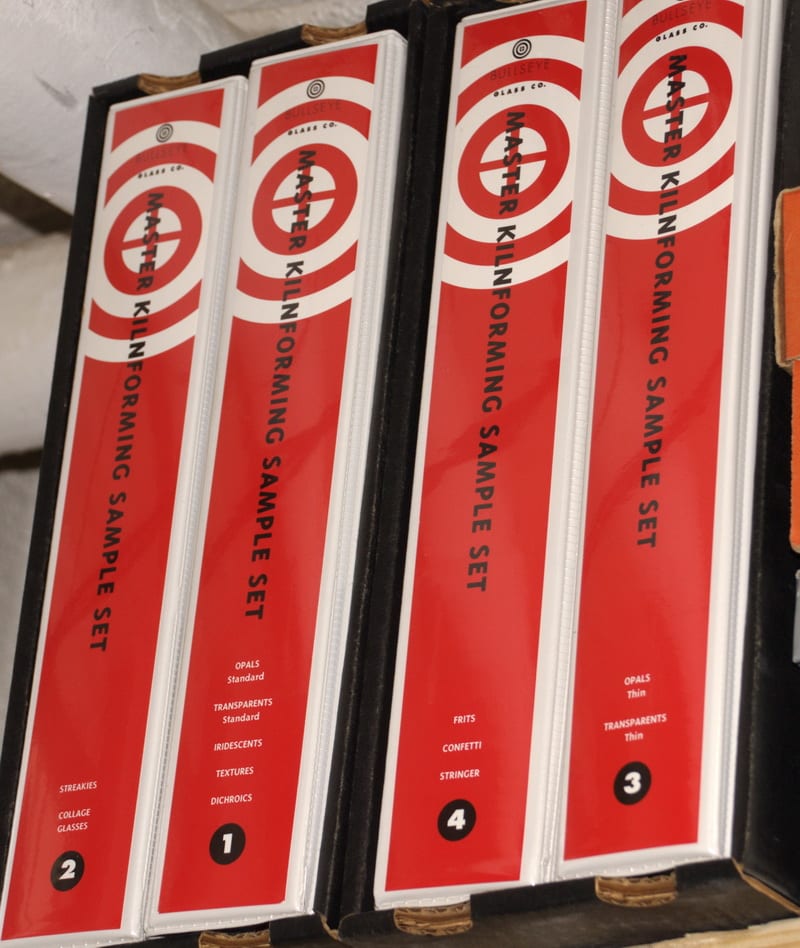
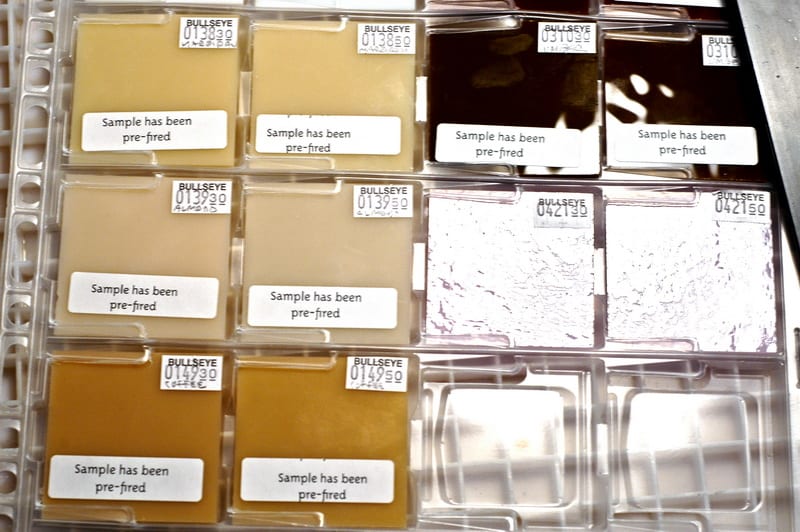
So, over the years, I have made a secondary sample set that shows the appearance of these colors after fusing. I’ve found that plastic silverware trays are the perfect way to store these 2″x2″ samples. The one pictured on the banner of this page even has a rubber bottom on the inside to keep them from slipping.
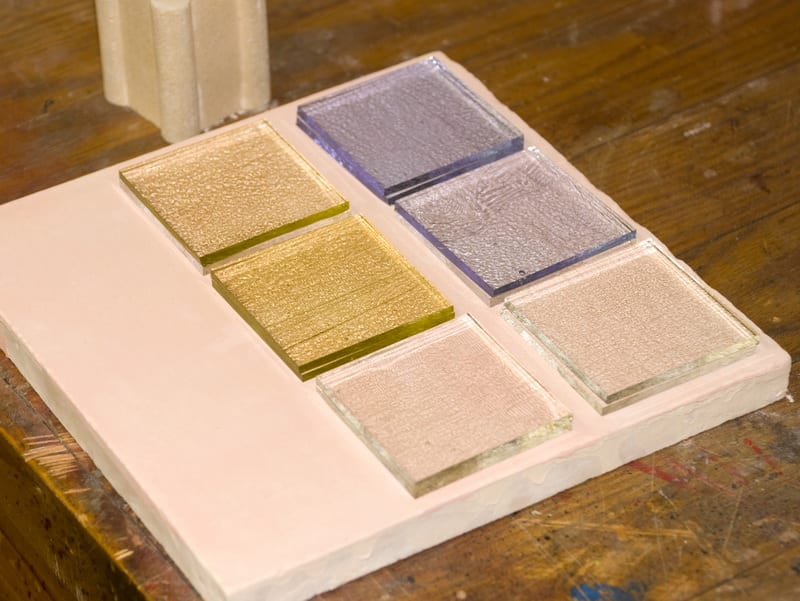

I have made samples of all my commonly used colors, and add new samples every time I get a sheet of a color I haven’t used before (which seems to happen with every new crate of glass).
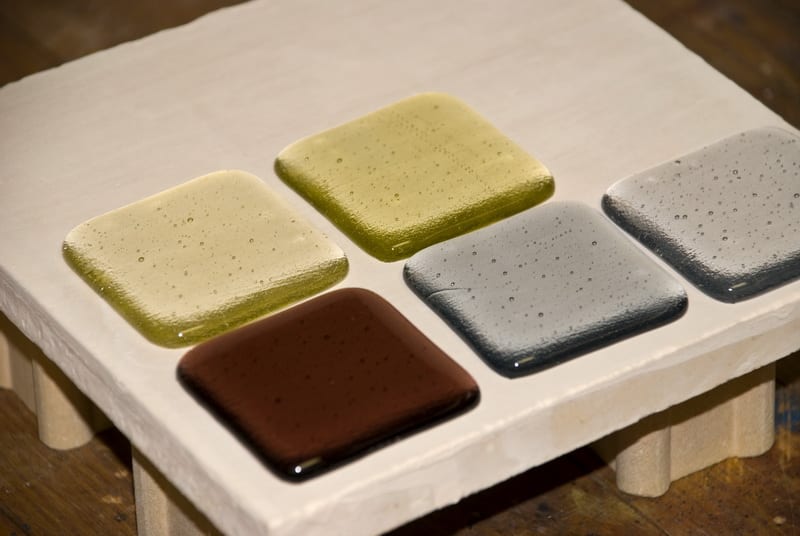
I then add labels indicating the name of the glass, as well as it’s number designation, and any other necessary information. I’ve found that clear labels work very well, and can use my computer and printer, or a dedicated label-maker.

You might want to also make some combination pieces, depending on what kind of work you make. I am often making 3/8″ thick strip cut pieces using tints. So, I make a sample with one layer of tint, and another with two layers of the tint. By combining samples, I can see how one, two or three layers of tint will look.
Other useful samples include:
- layering a transparent color over clear
- layering two transparent colors
- placing metals between layers of glass
- enamels
- reactions between frit and the underlying glass
- powders
What you decide to do will depend on the kind of work you create. Rarely do I start a design without laying out samples to help me visualize the colors and textures.

You may want to add additional information on your labels regarding chemical reactivity. I have recently started doing this, using the information from the Bullseye web site regarding the characteristics of each glass. I’ve printed this out, and I keep this handy, and make sure that I am aware of any potential reactions from adjacent glasses.
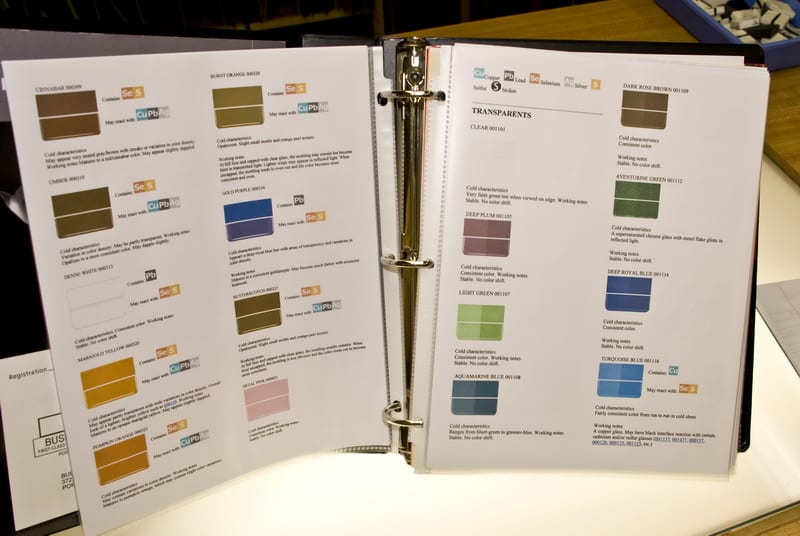
If you are a kiln glass artist, and are interested in one of the best and most cost effective methods of learning both basic and advanced techniques, the Bullseye Kiln-glass Education Online video lessons are fantastic. Click on this link to see the free ones, and consider signing up for the rest.
